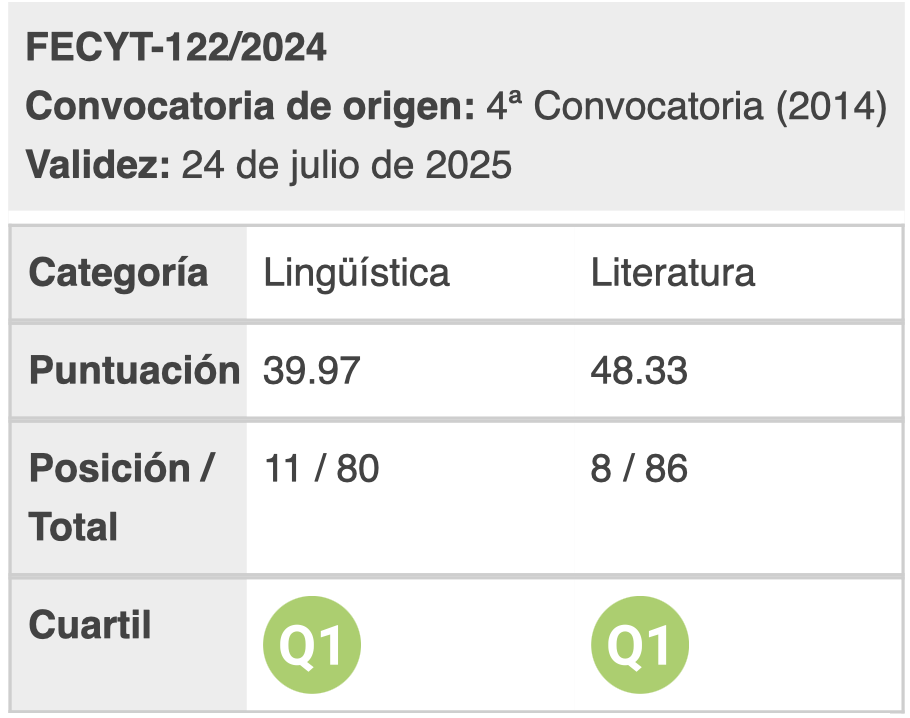Nan Shepherd’s The Living Mountain: Making Female Pleasure Visible
DOI:
https://doi.org/10.28914/Atlantis-2022-44.2.09Abstract
In the light of the new readings that Nan Shepherd’s texts are being subjected to as part of her academic and popular revival, I offer an analysis of her non-fictional volume The Living Mountain (1977) from an ecofeminist standpoint. Given the situation where, until now, the Scottish writer’s masterpiece has been almost exclusively linked to travel literature, construction of regional identity and environmental issues, the conjunction of ecology and gender that my research proposes creates an opening for the less explored world of female physical sensation and pleasure. The aim of this article is to upset the exclusive Nature/Woman connection as opposed to Man/Reason, because, as I will show, it proves to be restrictive, arbitrary and unfair. To this end, I will respond to some of the issues Eva Antón raises in her article “Claves ecofeministas para el análisis literario” (2017), where it is suggested that all literary texts should declare their ethical stance with respect to ecology and gender. All the above suggests that, contrary to the classical attitude of possession and conquest of the land, love combined with pleasure is the recipe Shepherd recommends for successfully accomplishing her archetypical journey across the Cairngorms.
Downloads
References
Abram, David. 1997. The Spell of the Sensuous: Perception and Language in a More-Than-Human World. New York: Vintage.
Antón, Eva. 2015. “ Cambio de roles de género en el cambio de siglo? Un análisis comparativo de las narrativas francesa y española (1990-2010).” PhD diss., University of Burgos. [Accessed February 16, 2020]
—. 2017. “Claves ecofeministas para el análisis literario.” Revista de Investigación y Divulgación sobre los Estudios de Género 21: 45-74.
Bell, Eleanor. 2014. “Into the Centre of Things: Poetic Travel Narratives in the Work of Kathleen Jamie and Nan Shepherd”. Kathleen Jamie: Essays and Poems on Her Work. Edinburgh: Edinburgh UP, 126-33.
Bourdieu, Pierre. (1998) 2002. La Domination Masculine. Paris: Éditions du Seuil.
Buell, Lawrence. 2001. Writing for an Endangered World: Literature, Culture and Environment in the US and Beyond. Massachusetts: Harvard UP. Kindle edition.
Campbell, Joseph. (1949) 2004. The Hero with a Thousand Faces. Commemorative Edition introduced by Clarissa Pinkola Estes. Princeton, NJ: Princeton UP.
Carretero, Margarita. 2010. “Ecofeminismo y análisis literario.” Ecocríticas. Literatura y Medio Ambiente. Edited by Carmen Flys et al.: 177-90.
Carson, Rachel. (1962) 2002. Silent Spring. Boston: Mariner Book.
Carter, Gillian. 2001. “‘Domestic Geography’ and the Politics of Scottish Landscape in Nan Shepherd’s ‘The Living Mountain’.” Gender, Place and Culture 8 (1): 25-36.
D’Eaubonne, Françoise. (1974) 2017. Le Feminisme ou la mort. Paris: Pierre Horay. Kindle edition.
Farrier, David. 2019. Anthropocene Poetics: Deep Time, Sacrifice Zones, and Extinction. Minneapolis, London: University of Minnesota Press. Kindle edition.
Gaard, Greta. 1993. “Living Interconnections with Animals and Nature.” Ecofeminism. Women, Animals, Nature. Edited by Greta Gaard. Philadelphia: Temple UP, 1-12.
Ingold, Tim. 1993. “The Temporality of Landscape.” World Archaeology 25: 152-174.
Kappes, Gabrielle. 2020. “The Picturesque and its Decay: The Travel Writing and Journals of Dorothy Wordsworth, Mary Wollstonecraft, and Mary Shelley.” PhD. diss., City University of New York (CUNY). [Accessed March 23, 2020]
Leopold, Aldo. 1949. “Thinking like a Mountain.” A Sand County Almanac and Sketches Here and There. Oxford: Oxford UP: 129-133.
Lumsden, Alison. 2007. “‘To Get Leave to Live’: Negotiating Regional Identity in the Literature of North-East Scotland.” The Edinburgh History of Scottish Literature:
Modern Transformations: New Identities (from 1918). Ed. by I. Brown, T. Clancy, S. Manning and M. Pittock. Edinburgh: Edinburgh UP, 95-105.
Macfarlane, Robert. 2011a. Landmarks. London: Penguin Books. Kindle edition.
—. 2011b. Introduction to The Living Mountain, by Nan Shepherd, 41-47. Edinburgh, London: Canongate. Kindle edition.
Merleau-Ponty, Maurice. (1945) 2014. La phénomónologie de la perception. Paris: Gallimard. Kindle edition.
Mies, María & Vandana Shiva. (1993) 2016. Ecofeminismo. Teoría, crítica y perspectivas. 2ª edición. Vilassar de Dalt: Icaria Antrazyt.
Peacock, Charlotte. 2017. Into the Mountain: A Life of Nan Shepherd. Cambridge: Galileo Publishers. Kindle edition.
Puleo, Alicia. H. 2011. Ecofeminismo para otro mundo posible. Valencia: Universidad de Valencia: Cátedra. Kindle edition
Rose, Gillian. 1993. Feminism and Geography: The Limits of Geographical Knowledge. Cambridge: Polity Press. Kindle edition.
Sassi, Carla. 2008. “A Quest for a (Geo)poetics of Relation: Nan Shepherd’s the Living Mountain.” Re-visioning Scotland. New Readings of the Cultural Canon, Edited by K. A. Macdonald and Lyndsay Luna. Bern: Peter Lang, 68-80.
Shepherd, Nan. (1928) 2009. The Quarry Wood. Edinburgh: Canongate. Kindle edition.
— (1977) 2011. The Living Mountain. Edinburgh, London: Canongate. Kindle edition.
Shiva, Vandana. 1998. “Las mujeres en la naturaleza. La naturaleza como el principio femenino.” Ecología y feminismo. Translated and edited by Maria Joxé Agra Romero: 1-9.
Smith, Sidonie. 1991. “Hacia una poética de la autobiografía de mujeres.” La autobiografía y sus problemas autobiográficos 29: 93-105.
Thoreau, Henry D. (1854) 2018. Walden. Gutenberg Project. [Accessed February 21, 2019]
Walton, Samantha. 2020. The Living World: Nan Shepherd and Environmental Thought. London: Bloomsbury. Kindle edition.








